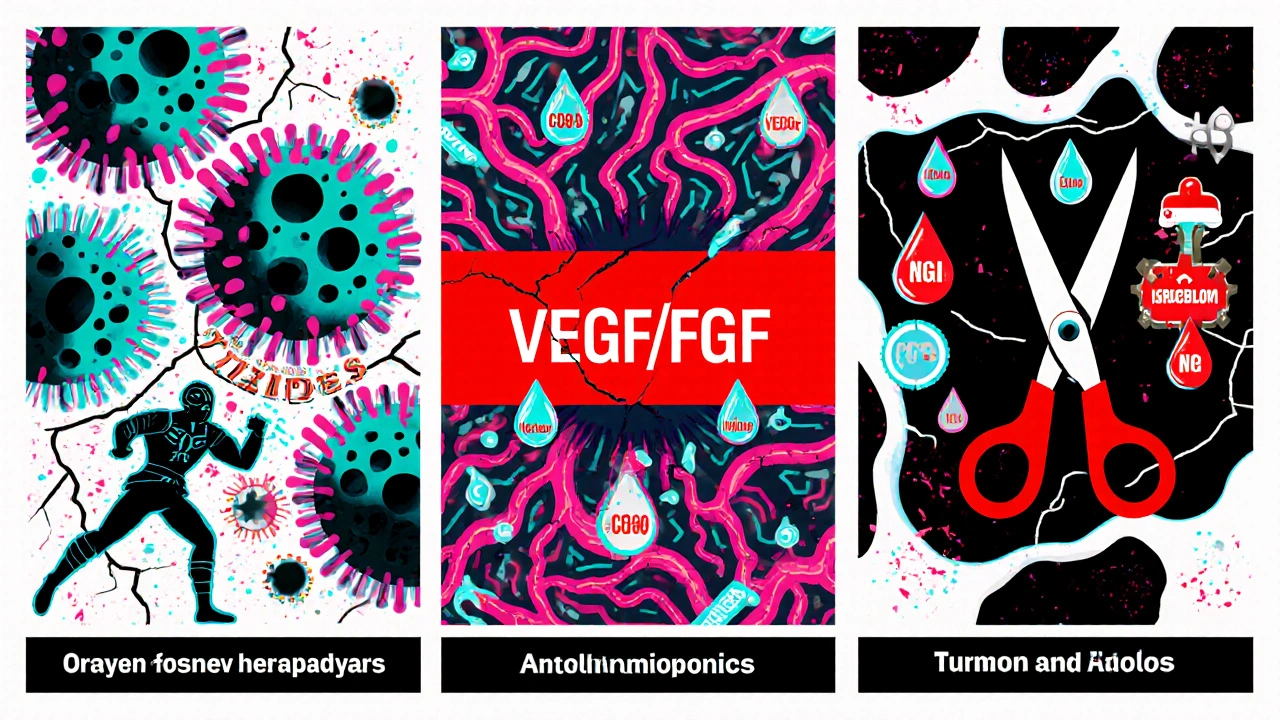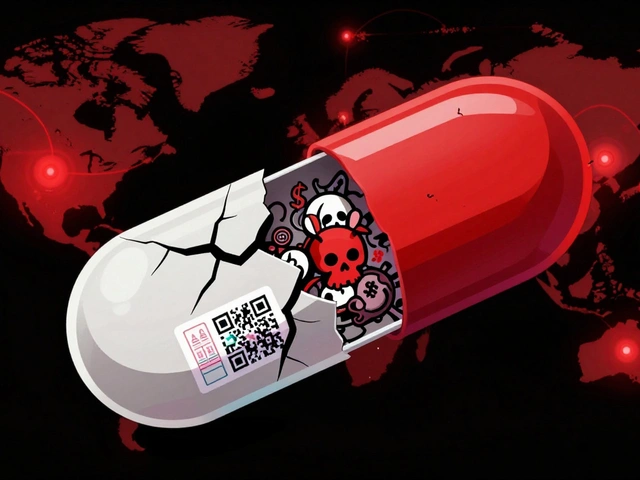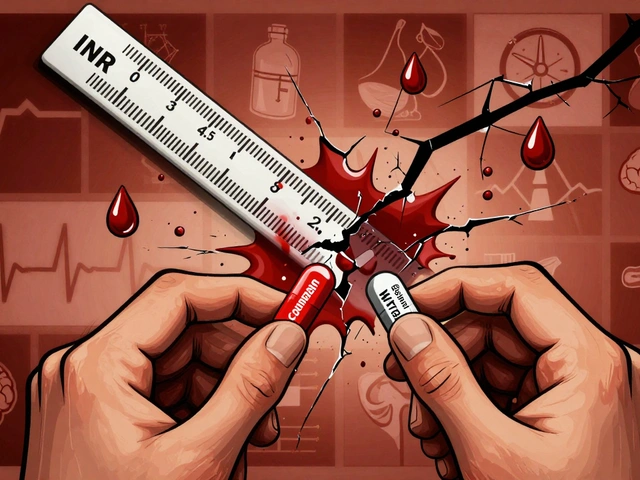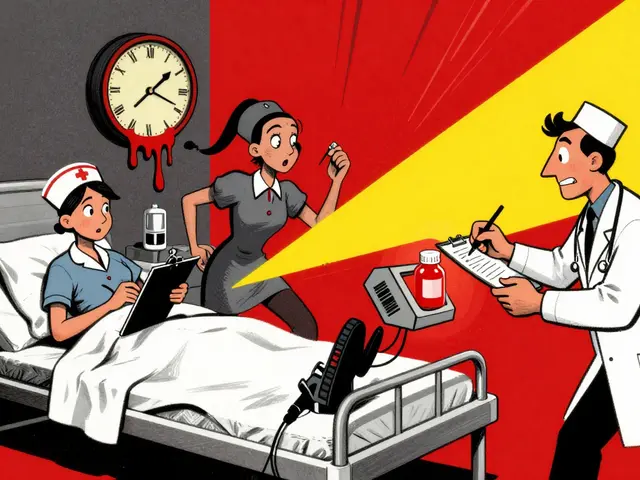Why maintenance matters after initial myeloma treatment
Patients who have responded to induction chemotherapy and, in many cases, an autologous stem cell transplant (ASCT), still face a high chance of disease relapse. Maintenance therapy is designed to keep the cancer at bay for as long as possible, improve overall survival, and maintain quality of life.
In the last decade, the immunomodulatory drug (IMiD) class has reshaped the maintenance landscape. Among them, lenalidomide is an oral agent that boosts T‑cell and NK‑cell activity while inhibiting angiogenesis and cytokine production in the bone‑marrow niche has become the most widely studied and prescribed option.
The drug lenalidomide has become a cornerstone of long‑term control for many patients, but its role is nuanced and depends on disease characteristics, previous therapies, and individual tolerance.
How lenalidomide works as a maintenance agent
Lenalidomide belongs to the thalidomide‑derivative family, which also includes thalidomide and pomalidomide. Its anti‑myeloma activity stems from three inter‑related mechanisms:
- Immune modulation: It increases the proliferation and cytotoxicity of CD8+ T cells and natural killer (NK) cells, helping the immune system recognize and kill residual plasma cells.
- Anti‑angiogenic effect: By inhibiting vascular endothelial growth factor (VEGF) and fibroblast growth factor (FGF), it starves the tumor of nutrients needed for growth.
- Direct tumor‑cell inhibition: It triggers the degradation of the transcription factor Ikaros (IKZF1) and Aiolos (IKZF3) via the cereblon (CRBN) E3 ubiquitin ligase complex, leading to cell‑cycle arrest and apoptosis.
These actions make lenalidomide especially valuable after a deep response, where only a handful of malignant cells may remain.
Evidence that supports lenalidomide maintenance
Large phase III trials have established the survival benefit of lenalidomide after ASCT or even after non‑transplant induction:
- CALGB 100104: Patients receiving lenalidomide for up to three years after transplant showed a 48% reduction in disease progression and a 25% overall‑survival advantage compared with placebo.
- IFM 2005‑02: Maintenance with lenalidomide (or lenalidomide plus dexamethasone) extended median progression‑free survival (PFS) from 13.0 months to 41.9 months.
- MAIA trial (front‑line non‑ASCT cohort): Lenalidomide‑dexamethasone maintenance after a daratumumab‑based induction yielded a 5‑year overall‑survival rate of 77% versus 68% in the control arm.
These studies collectively underpin current guideline recommendations and justify the drug’s status as a standard of care for most newly diagnosed patients who achieve at least a partial response.
Who should consider lenalidomide maintenance?
Guidelines from the International Myeloma Working Group (IMWG) and the National Comprehensive Cancer Network (NCCN) converge on a few key criteria:
- Achieved a response: Partial response (PR) or better after induction, with or without ASCT.
- Adequate renal function: Creatinine clearance >30 mL/min, because lenalidomide is renally excreted.
- No high‑risk cytogenetics that would favor a proteasome‑inhibitor‑based maintenance: e.g., del(17p), t(4;14) may still benefit, but combination approaches are often explored.
- Acceptable hematologic baseline: Platelet count >100 ×10⁹/L and absolute neutrophil count >1.5 ×10⁹/L, to minimize early dose‑limiting cytopenias.
If a patient meets these conditions, lenalidomide monotherapy (usually 10 mg daily on days 1‑21 of a 28‑day cycle) is the first‑line maintenance option.

When lenalidomide isn’t the best fit
Not every patient can tolerate or benefit from an IMiD‑only regimen. Situations that may prompt a different approach include:
- Severe peripheral neuropathy: Lenalidomide is less neurotoxic than thalidomide, but cumulative exposure can still exacerbate symptoms.
- History of deep‑vein thrombosis (DVT) or pulmonary embolism: IMiDs increase clot risk; anticoagulation may be required, or a proteasome inhibitor (e.g., bortezomib) may be chosen instead.
- Renal impairment: Dose adjustments are mandatory; in patients on dialysis, the drug is often avoided.
- High‑risk cytogenetics: Combination maintenance (lenalidomide + bortezomib) has shown better outcomes in this subgroup.
Managing side effects and monitoring
Lenalidomide’s safety profile is well‑characterized, yet vigilance is crucial to keep patients on therapy:
- Myelosuppression: Neutropenia and anemia are the most common dose‑limiting toxicities. CBC monitoring every 2‑4 weeks for the first two months, then monthly, is standard. Dose reductions to 5 mg or 2.5 mg are employed based on severity.
- Thromboembolic events: Prophylactic aspirin (81‑325 mg) is recommended for most patients; full anticoagulation is used for those with additional risk factors.
- Secondary primary malignancies (SPMs): Long‑term data suggest a slight increase in solid tumors and hematologic SPMs. Annual skin checks and age‑appropriate cancer screenings are advised.
- Pregnancy risk: Lenalidomide is teratogenic. Patients of child‑bearing potential must enroll in a risk‑evaluation and mitigation strategy (REMS) program, use two forms of contraception, and undergo monthly pregnancy testing.
Regular clinic visits for toxicity assessment, alongside patient‑reported outcome tools, improve adherence and early detection of problems.
Duration of therapy - how long should patients stay on lenalidomide?
Guidelines do not prescribe a fixed stop date; treatment continues until disease progression, intolerable toxicity, or patient choice. Real‑world data show a median treatment duration of 2-3 years, but many patients remain on therapy beyond five years with manageable side effects.
Key decision points include:
- Plateau in response: If the patient reaches a sustained complete response (CR) for more than 2 years, a discussion about a “drug holiday” may be appropriate.
- Cumulative toxicity: Persistent grade 2+ neuropathy or cytopenia often triggers dose reduction or discontinuation.
- Patient preferences: Quality‑of‑life considerations, financial burden, and lifestyle impact weigh heavily in the decision.

Comparing lenalidomide with other IMiDs for maintenance
| Attribute | Lenalidomide | Pomalidomide | Thalidomide |
|---|---|---|---|
| Typical dose (mg/day) | 10 - 25 (cyclic) | 4 - 5 (continuous) | 100 - 200 (continuous) |
| Administration | Oral, 21 days on / 7 days off | Oral, continuous | Oral, continuous |
| Major toxicities | Neutropenia, thrombosis, SPMs | Neutropenia, infections | Peripheral neuropathy, constipation |
| Impact on overall survival (based on trials) | +20‑30% 5‑yr OS | +10‑15% (in refractory settings) | Modest OS benefit, higher neuropathy |
| Cost (US, 2025) | $13,000‑$18,000 per year | $22,000‑$28,000 per year | $7,000‑$10,000 per year |
In practice, lenalidomide remains the go‑to option for most patients because it balances efficacy and tolerability better than thalidomide, while being far less costly than pomalidomide.
Practical steps to start lenalidomide maintenance
- Confirm response status (≥ PR) after induction/ASCT.
- Obtain baseline labs: CBC, CMP, renal function, pregnancy test (if applicable).
- Prescribe lenalidomide 10 mg daily on days 1‑21 of a 28‑day cycle; adjust dose for renal function.
- Start aspirin 81 mg daily for DVT prophylaxis unless contraindicated.
- Schedule CBC monitoring: every 2 weeks for the first two cycles, then monthly.
- Educate patient on signs of infection, neuropathy, and importance of contraceptive measures.
- Document response every 3‑6 months with serum M‑protein, free light‑chain ratio, and imaging as indicated.
Following this checklist helps streamline the transition from acute treatment to long‑term disease control.
Future directions - what’s next for lenalidomide maintenance?
Research is actively exploring combination strategies and biomarker‑driven personalization:
- Lenalidomide + bortezomib: Early phase II data suggest synergy, especially in high‑risk cytogenetics.
- Lenalidomide + checkpoint inhibitors: Trials pairing with pembrolizumab are assessing immune‑enhancement beyond IMiD effects.
- Minimal residual disease (MRD)‑guided discontinuation: Ongoing studies test stopping lenalidomide after sustained MRD negativity, aiming to reduce toxicity without sacrificing survival.
These advances could refine who stays on therapy, for how long, and whether a drug‑free remission is achievable.
Key takeaways
- Lenalidomide is the most evidence‑backed maintenance drug for multiple myeloma after achieving at least a partial response.
- Benefits include significantly longer progression‑free and overall survival, especially when started post‑ASCT.
- Common toxicities-myelosuppression, thrombosis, and secondary cancers-require regular monitoring and proactive management.
- Patients with severe neuropathy, high renal risk, or high‑risk cytogenetics may need alternative or combination regimens.
- Treatment continues until progression or intolerable side effects; long‑term use beyond five years is common in well‑tolerated cases.
Can I take lenalidomide if I didn’t have a stem cell transplant?
Yes. Several trials (e.g., MAIA) demonstrated progression‑free survival benefits for patients who received lenalidomide‑dexamethasone after a non‑transplant induction regimen, provided they achieved at least a partial response.
How often should I get blood work while on maintenance?
Check CBC and chemistry panels every 2‑4 weeks during the first two cycles, then monthly if counts are stable. Adjust the interval if you develop cytopenias.
What are the signs of a serious infection I need to report?
Fever above 38 °C, chills, persistent cough, shortness of breath, or painful mouth sores should trigger an immediate call to your oncology team.
Is aspirin enough for clot prevention, or do I need stronger anticoagulation?
Aspirin 81‑325 mg daily is standard for most patients. If you have additional risk factors-such as prior DVT, atrial fibrillation, or a inherited clotting disorder-your doctor may prescribe warfarin or a direct oral anticoagulant.
When should lenalidomide be stopped?
Stop if disease progresses, side effects become grade 3‑4 despite dose reductions, or if you choose to discontinue after discussing risks and benefits with your physician.







Amanda Vallery
October 24, 2025 AT 14:43Lenalidomide is a solid choice for most myeloma pts as long as kidney funtion is ok and you keep an eye on blood counts.
Lindy Hadebe
October 31, 2025 AT 12:33Honestly the hype around lenalidomide is overrated.
Ekeh Lynda
November 7, 2025 AT 11:23Lenalidomide has become a staple in maintenance therapy for multiple myeloma. The drug works by modulating the immune system and inhibiting angiogenesis. Clinical trials have shown a clear benefit in progression free survival. Patients who achieve at least a partial response are prime candidates. Renal function must be assessed before starting therapy. Dose adjustments are required for creatinine clearance below 50 milliliters per minute. Myelosuppression is the most common dose limiting toxicity. Regular blood work every two weeks in the first months helps catch neutropenia early. Thrombosis risk can be mitigated with low dose aspirin in most cases. Secondary malignancies remain a concern and warrant annual skin exams. The drug is teratogenic and requires strict contraception for women of child bearing potential. Some patients experience peripheral neuropathy though it is less frequent than with thalidomide. High risk cytogenetics may call for combination regimens with proteasome inhibitors. Long term data suggest many patients stay on therapy for three to five years. Ongoing studies are evaluating MRD guided discontinuation to reduce exposure.
Mary Mundane
November 14, 2025 AT 10:13While lenalidomide works for many, the side effect profile still scares off a lot of patients.
Michelle Capes
November 21, 2025 AT 09:03I get why you’re leaning on lenalidomide – the blood work schedule can feel relentless but catching issues early really helps 😊 sorry if my typing is off.
Dahmir Dennis
November 28, 2025 AT 07:53Oh sure, let’s just ignore a decade of robust phase three data because you think the buzz is fake. The reality is that without maintenance most myeloma patients relapse within a year and that is a number no one likes to see. It’s adorable to dismiss the survival advantage as mere hype when the numbers speak louder than any opinion. The drug’s side effects are manageable with proper monitoring and dose tweaks, not a reason to abandon it altogether. If you’re worried about cost, that’s a systemic issue, not a flaw in the medication itself. And yes, the risk of secondary cancers exists but it’s comparable to many long‑term therapies in oncology. So before you write it off, maybe consider the facts rather than a knee‑jerk dismissal.
Casey Morris
December 5, 2025 AT 06:43Indeed, the mechanisms you outlined are fascinating, especially the cereblon‑mediated degradation pathway; however, it’s also worth noting that patient adherence can be challenging, given the cyclical dosing schedule, and that health‑care providers must remain vigilant, otherwise toxicities may slip through the cracks; moreover, the interplay with other agents, like bortezomib, adds another layer of complexity, which is why multidisciplinary discussions are crucial, don’t you think?
Teya Arisa
December 12, 2025 AT 05:33Dear colleague, I appreciate your concern regarding the adverse event profile of lenalidomide; indeed, patient education and close monitoring are paramount to mitigate these risks, and shared decision‑making can empower patients to feel confident in their treatment journey. 😊
Kester Strahan
December 19, 2025 AT 04:23Yo Michelle, the PK/PD data on lenalidomide definitely shows a dose‑response curve that correlates with nadir neutrophil counts, so you’ll want to watch those labs weekly during cycle one, and then you can space ’em out. Also, make sure the patient’s on prophylactic ASA to keep the VTE risk low – that’s pretty standard in the field. Definately keep an eye on renal clearance, especially if they’re on other nephrotoxic meds. Gonna send over the protocol summary later.
Doreen Collins
December 19, 2025 AT 13:43Thanks for the thoughtful note, Teya. It’s so important to blend clinical vigilance with compassionate communication. Patients often feel reassured when we acknowledge both benefits and risks in a balanced way.